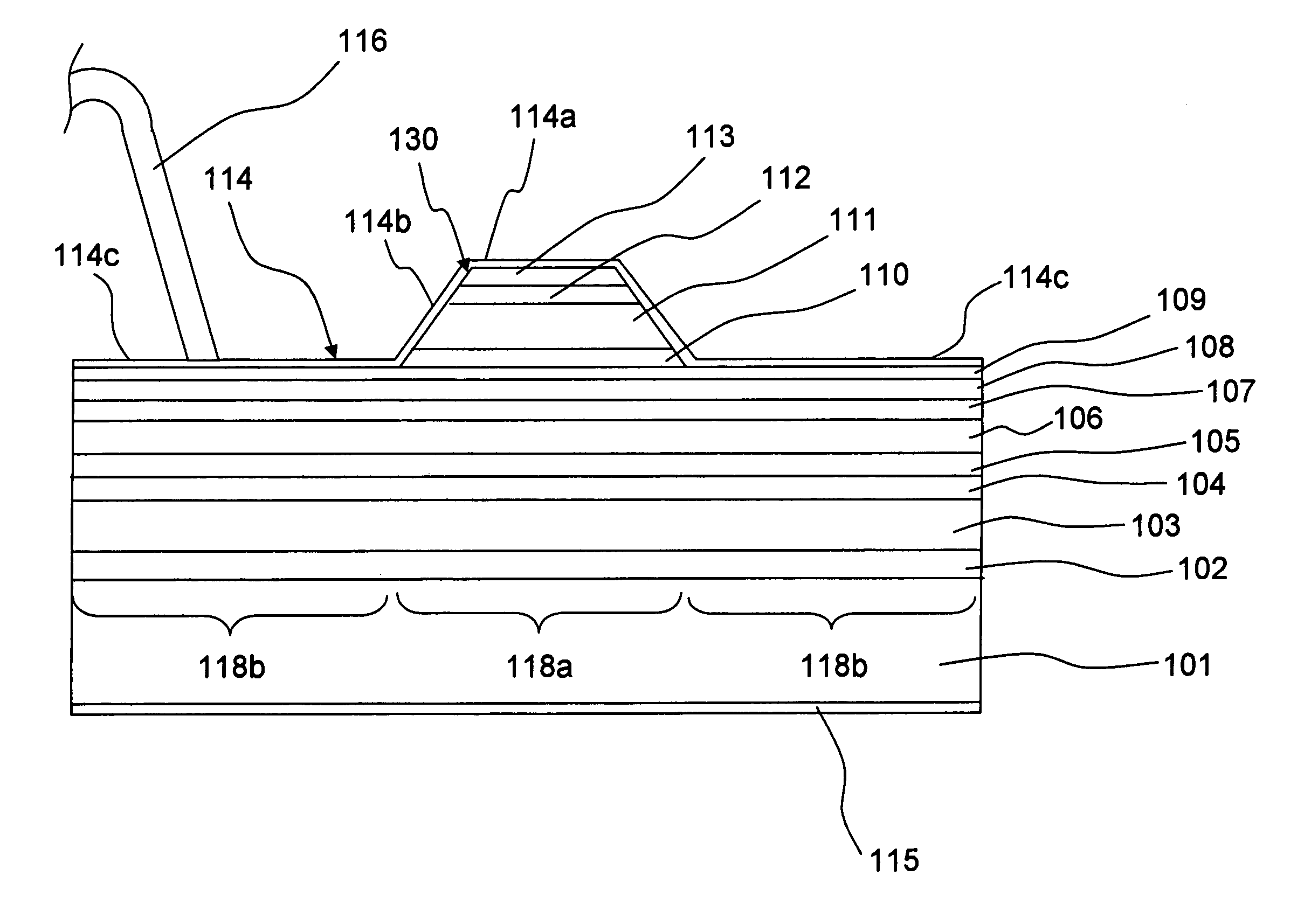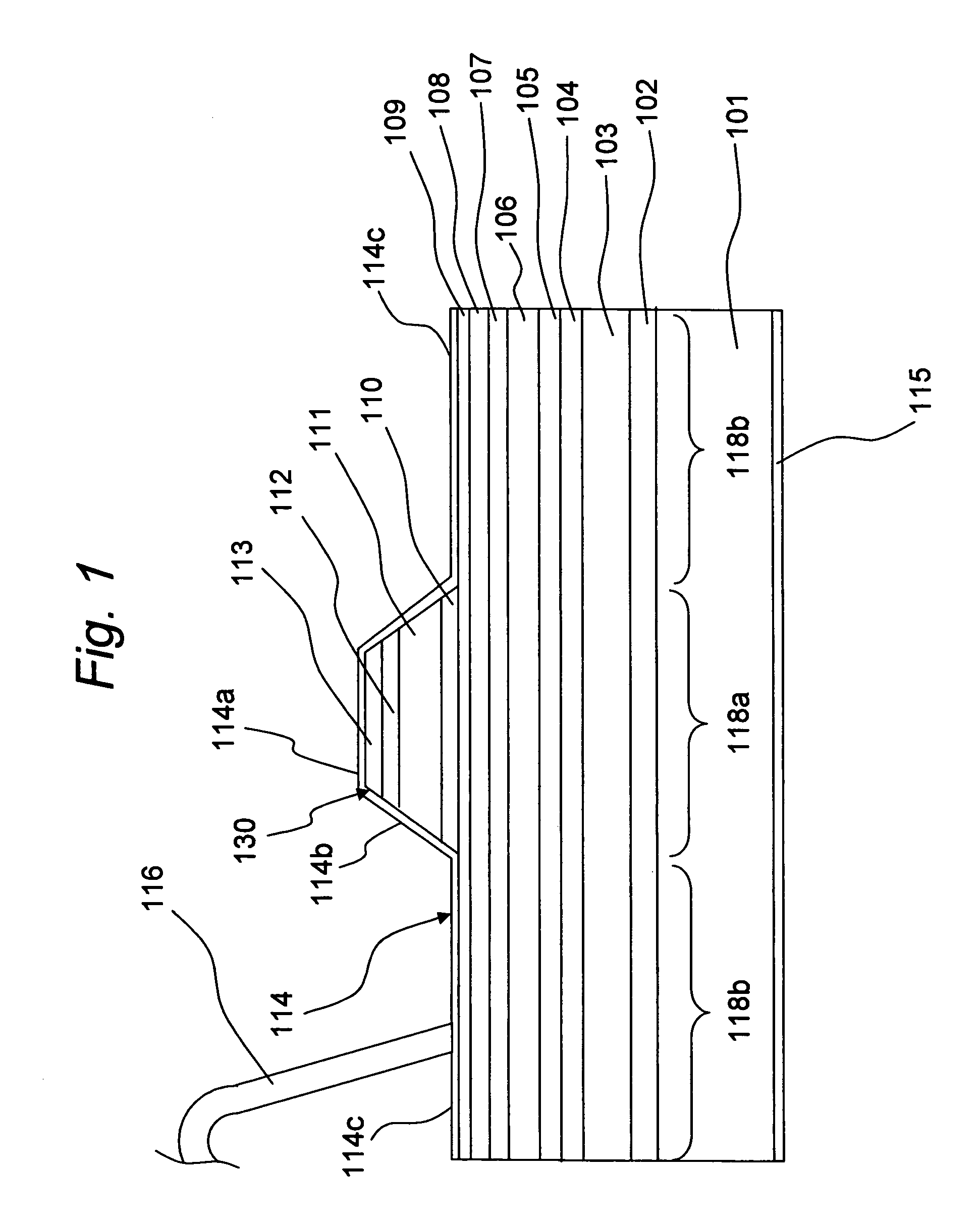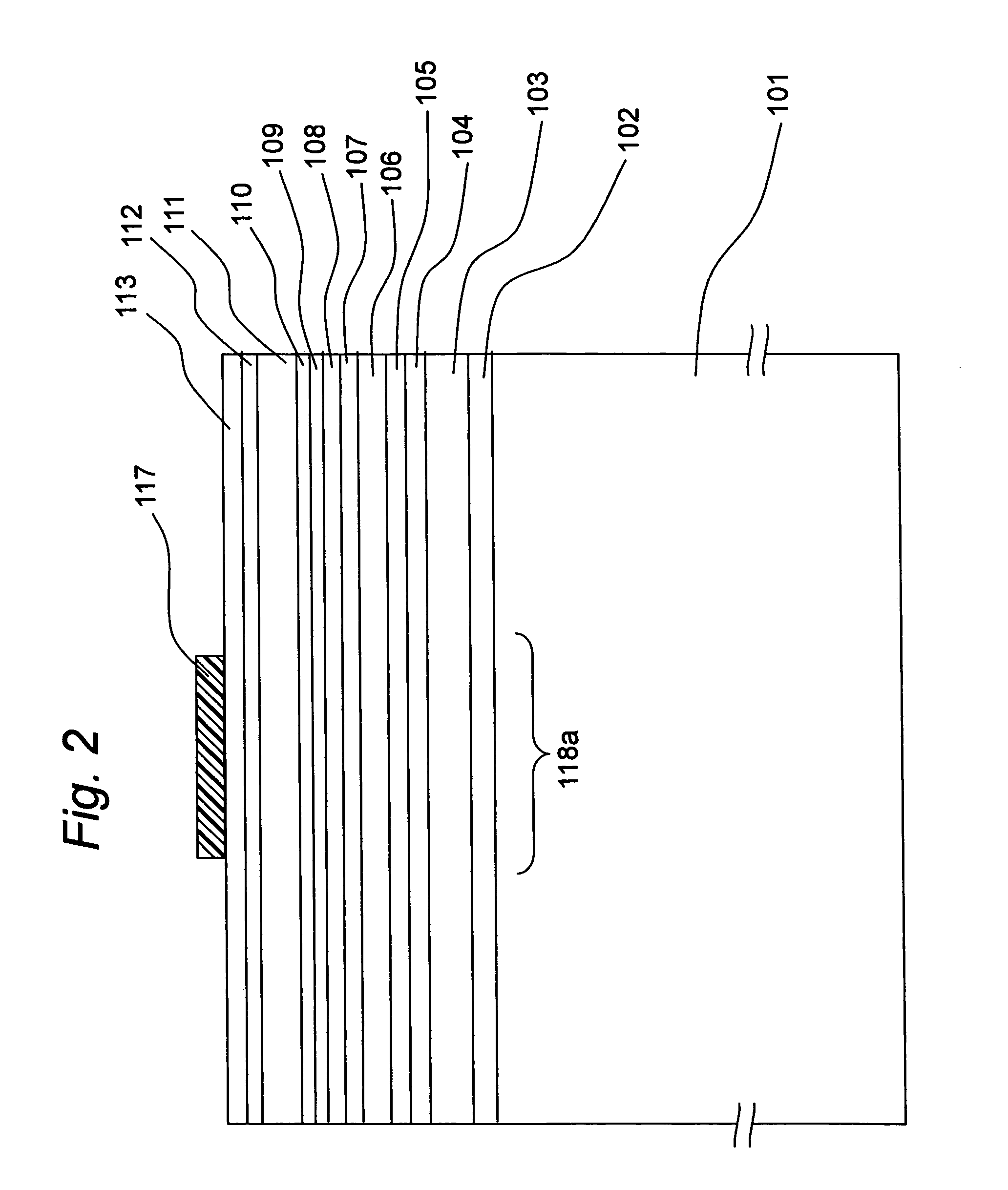Semiconductor laser element, manufacturing method thereof, optical disk apparatus and optical transmission system
a semiconductor laser and manufacturing method technology, applied in the field of semiconductor laser elements, can solve the problems of poor reliability of schottky junction portions, large cost increase factor in forming semiconductor laser elements, and difficulty in providing element design matched to optical characteristic specifications demanded for various applications, etc., to achieve long-term reliability, low threshold current, and high power
- Summary
- Abstract
- Description
- Claims
- Application Information
AI Technical Summary
Benefits of technology
Problems solved by technology
Method used
Image
Examples
first embodiment
[0137]FIG. 1 shows the structure of a semiconductor laser element for an optical disk (emission wavelength: 780 nm) according to the first embodiment of the present invention.
[0138]In this semiconductor laser element, an n-GaAs buffer layer 102, an n-Al0.453Ga0.547As first lower cladding layer 103, an n-Al0.5Ga0.5As second lower cladding layer 104, an Al0.4278Ga0.5722As lower guide layer 105, a multiple strained quantum well active layer 106, an Al0.4278Ga0.5722As upper guide layer 107, a p-Al0.4885Ga0.5115As first upper cladding layer 108 and a p-Al0.4885Ga0.5115As second upper cladding layer 109 are successively stacked in this order on an n-GaAs substrate 101. A p-GaAs etching stopper layer 110, a p-Al0.4885Ga0.5115As third upper cladding layer 111, a p-GaAs contact layer 112 and a p+-GaAs contact layer 113 are provided on the second upper cladding layer 109 so as to form a ridge structure 130 of a forward mesa stripe shape. Further, a p-side electrode 114, which is constructed o...
second embodiment
[0155]FIG. 8 is a schematic sectional view showing the structure of a semiconductor laser element of a second embodiment of the present invention, in which an example obtained by modifying the semiconductor laser element of the first embodiment so as to restrain the absorption by the p-side electrode is shown. In the semiconductor laser element shown in FIG. 8, SiNx films 119 and 119 (thickness: 1500 Å. The SiNx film will be referred to simply as the “SiN film”.) that serve as insulators are provided in a striped manner along both sides of the ridge structure 130 of a forward mesa stripe shape. The SiN films 119 are provided so as to cover side surfaces of the third upper cladding layer 111, side surfaces of the GaAs etching stopper layer 110, and part (3 μm from the ridge structure) of the upper surfaces of the second upper cladding layer 109, and the p-side electrode 114 is provides so as to cover them. That is, each SiN film 119 is provided in a position enclosed by a side surfac...
third embodiment
[0157]FIG. 9 is a schematic sectional view showing the structure of a semiconductor laser element of a third embodiment of the present invention, in which a modification of the semiconductor laser element of the first embodiment is shown. The third embodiment differs from the first embodiment in that stripe-shaped structures 131 are formed on both sides of the ridge structure 130, and is characterized by use of the junction down mounting method in which the laser element is die bonded by using a region on the stripe-shaped structure 131 of the p-side electrode as a bonding surface. The “bonding surface” means a surface of the semiconductor laser chip to be put in contact with a stem or a heat sink on which the semiconductor laser element is mounted.
[0158]The construction and the manufacturing method of the stripe-shaped structures formed on both sides of the ridge structure will be particularly described below, and no detailed description is provided for the constituents common to t...
PUM
 Login to View More
Login to View More Abstract
Description
Claims
Application Information
 Login to View More
Login to View More - R&D
- Intellectual Property
- Life Sciences
- Materials
- Tech Scout
- Unparalleled Data Quality
- Higher Quality Content
- 60% Fewer Hallucinations
Browse by: Latest US Patents, China's latest patents, Technical Efficacy Thesaurus, Application Domain, Technology Topic, Popular Technical Reports.
© 2025 PatSnap. All rights reserved.Legal|Privacy policy|Modern Slavery Act Transparency Statement|Sitemap|About US| Contact US: help@patsnap.com



